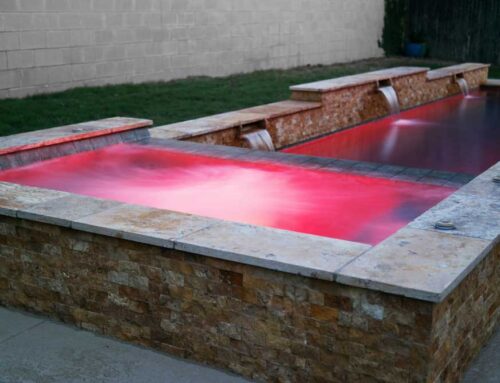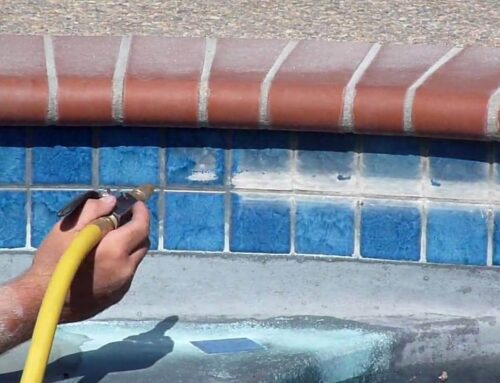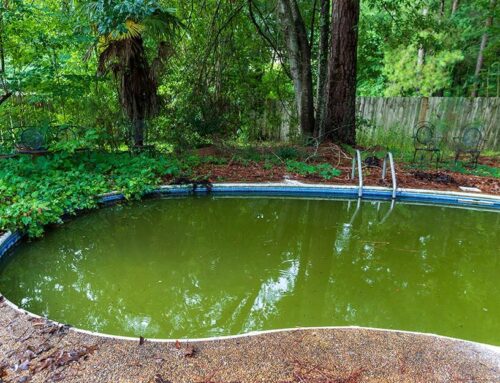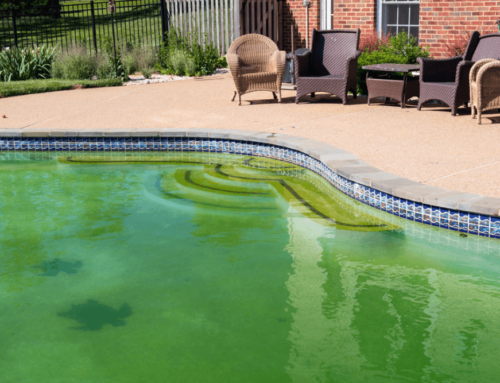If you’re wondering how to find a pool leak, you’ve come to the right place. Leaks in your pool can happen anywhere, and it’s important to know the steps involved in identifying and addressing them. Before you embark on the process of locating a pool leak, it’s essential to rule out other potential issues such as evaporation and cracks in your filter system plumbing.
How Can You Tell Where Your Pool Is Leaking?
You’ll want to check your plumbing and pool equipment before you start any testing. Verify the condition of the entire filter system, including your pool filter, heater, and chlorinator, as well as any O-rings or connections that may be leaking water. These leaks are relatively easy to fix.
However, there is still a possibility that there is a leak somewhere in your plumbing system that you cannot see. If you have an underground swimming pool, it’s possible for the piping to crack. Even if there is no visible plumbing leak, it’s important to check your pool first to ensure that water is not being lost due to evaporation.
Is Your Pool Evaporating or Leaking?
To detect a pool leak, you must first determine whether water loss is due to evaporation. Once you have ruled out evaporation, you can proceed to identify the source of the leak. There are two common methods for this: the Bucket Test and the Ink Test.
Pool Leak Detection: Bucket Test
You probably already have the materials you need to complete this DIY project.
- 5-gallon bucket
- Waterproof marker or duct tape
- Place the bucket and fill it. Position your 5-gallon empty bucket on the second step in your pool. Fill the bucket to the same level as the water in the pool. Mark this level with duct tape or a marker.
- Turn off the pump. Switch off any auto-refill devices you may own, including the recirculating pumps.
- Compare the water levels. Compare the water levels in the bucket and the pool after 24 hours. If both the bucket and pool water levels have decreased but are still the same, then your pool is losing a significant amount of water through evaporation. If the level of the swimming pool is lower than that in the bucket, you likely have a leak.
- Repeat the test with the pump on. Repeat the test again for another 24 hours, but this time keep the pump running.
- Compare the results. If the water loss is greater when the water is under pressure, it will be more evident that there is a leak in your pool.
Pool Leak Detection: Dye Test
You can use this method to find the exact location of the leak, but it is a bit more complicated. To add dye to your pool, you’ll need to buy it. You can also use waterproof tape to mark any leaks in your pool.
- Check the walls and ground around the pool. If you observe water on the ground where it shouldn’t be, it may indicate a leak in that particular area. Before using leak-finder dye, continue narrowing down the potential leak location.
- Shut off the water pump and any other features. The water should be calm and clear when applying the dye. This method is also useful for detecting leaks near or in the skimmer
- Utilize pool leak detection dye to identify the leak’s precise location. Squirt the dye into the water near the pool’s surface and the wall without making physical contact. You will notice the dye moving towards the leak location, resembling a current.
- Mark the spot for patching. Use waterproof adhesive tape to mark the area where the leak detection dye is moving. This will help you remember where to apply the patch and seal the leak.
To perform the test, you’ll need to wear goggles if you suspect the leak is in the pool bottom. It’s important to remain as still as possible during the test to prevent the dye from spreading.
If you have a concrete or gunite swimming pool that has developed cracks, you’ll need to repair the plaster, especially where the plastic skimmer joins the pool wall. If your pool is lined with vinyl, you can fix the patch yourself.
How to Fix a Leak on Your Pool’s Vinyl Liner
Repairing leaks in a vinyl-lined pool is relatively easy. A properly placed and high-quality patch can last for many years. However, it’s important to note that all patches are temporary, and the larger the tear, the higher the chance of peeling or snagging over time.
Before attempting any pool repairs, assess whether the liner is worth patching or if it’s time to replace it entirely. As the liner ages, it becomes thinner and more susceptible to developing leaks.
Keep in mind that areas near the stairs and fittings of your pool are under greater stress due to water movement. Consequently, these areas may not last as long as others.
There are three waterproof methods to repair a leak. It is not necessary to drain the pool water in order to patch a hole. Draining too much water from an above-ground pool can cause the walls to collapse. Additionally, emptying a pool with a vinyl lining will cause it to dry out and become brittle. Plan to repair the liner below the waterline unless there is a dry leak above it.
1. Waterproof Tape
This tape is similar to duct tape, but it is clear, waterproof, and UV-resistant. It can be overlapped to repair larger areas. This is the most cost-effective option and also the easiest to fix if you make a mistake. However, it is more suitable for small leaks as it may peel over time.
2. Peel-and Stick Patches
These patches are made from genuine vinyl and are specifically designed for pool repairs. Some patches come pre-cut in round shapes to minimize the chances of peeling along the edges. These patches are user-friendly and affordable: simply remove the backing and apply them directly onto the leak. They work best for smaller holes or tears.
3. Vinyl Patch Kit
If you need to repair a large hole or desire a long-term solution, it is recommended to use a vinyl patch kit. These kits typically consist of sizable sections of clear or blue liner along with specialized underwater vinyl adhesive. While they may be more challenging to work with, they offer greater durability compared to waterproof adhesive or peel-and-stick patches.
You Should Always Ask a Professional to Test and Repair a Pool Leak
Pool leak detection services can cost several hundred dollars. While certain pool companies may include minor repairs in their pricing, it is advisable to attempt the aforementioned methods before considering professional assistance.
In the case of an inground swimming pool where an underground leak is suspected, it is necessary to hire a professional pool technician to conduct a pressure test and inspect for cracks.
If you find that pool leak detection or any other pool repairs are too challenging to perform or if you are uncertain about the accuracy of your results, it is recommended to consult a professional.
If you’re in need of expert pool leak detection services or professional assistance with your pool repairs, consider reaching out to Florida Pool Patio. With their experienced team and dedication to exceptional service, they can help diagnose and resolve any pool-related issues you may have.
Contact Florida Pool Patio today to ensure your pool remains in top condition for your enjoyment and relaxation.
Services We Offer:






